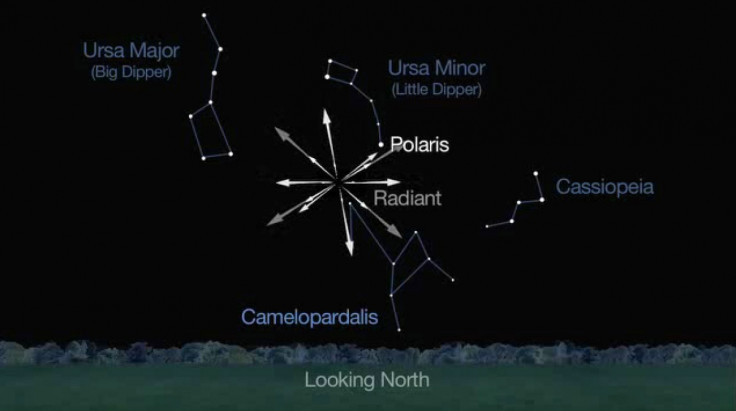Camelopardalid Meteor Shower: Earth to Intercept 'Dust Trails' Comet 209P/LINEAR For First Time
A previously unobserved celestial event called the Camelopardalid meteor shower is set to take place for the first time on the night of 23 May.
Although skywatchers have been able to watch annual showers such as the Leonids and the Perseids, when Earth passes through debris left behind by the Comet Swift-Tuttle, for hundreds of years, next week's shower has never before graced our skies.
The spectacular show is the result of tiny pieces of rock and ice given off by Comet 209P/LINEAR, a very faint comet that was discovered in 2004 by the Lincoln Near-Earth Asteroid Research initiative. The comet completes one orbit around the Sun every five years.
The Camelopardalid meteor shower will be visible for spectators in North America, as it is expected to occur on the night of 23 May and the early morning of 24 May. However, as the event will occur after sunrise, it will not be visible in the UK.

Earth's orbit will intersect the comet's debris fields from 1803 to 1924, which according to USA Today, makes the shower more of a storm.
Speaking to IBTimes UK, Robert Massey, of the Royal Astronomical Society, explained: "The likelihood is that Earth, for the first time, will intercept the comet's dust trails."
"This is material that broke off the comet in the early 20th century. It is only now that they are in position for the Earth to move between them."
A meteor shower occurs when Earth passes through clouds of dust and gas left behind from comets as the planet orbits the sun. The material burns up as it enters the Earth's atmosphere, creating a spectacular display.
The show depends on the amount of debris in space, but some forecasters have predicted next week's shower may see up to 200 "shooting stars" per hour. But it is still unclear as to exactly what will happen.
"They tend to be quite good on timing - the models of trails have got better, which is good for die-hard fans," Massey added. "But Quite often the gravity of Jupiter can nudge streams of material - It is difficult to know what will happen."
Bill Cooke, a Nasa meteor expert and head of the US Meteoroid Environment Office at the Marshall Space Flight Center, told Space.com: "There could be a new meteor shower, and I want to see it with my own eyes."
"We expect these meteors to radiate from a point in Camelopardalis, also known as 'the giraffe,' a faint constellation near the North Star," Cooke said. "It will be up all night long for anyone who wishes to watch throughout the night."
According to the Orion Gazette, the comet is expected to be as bright as 10th or 11th magnitude. The Camelopardalids will appear to radiate from the direction of the constellation Camelopardalis.
© Copyright IBTimes 2025. All rights reserved.






















